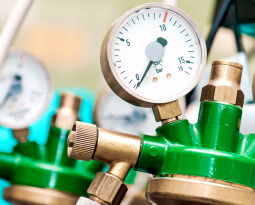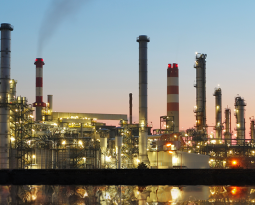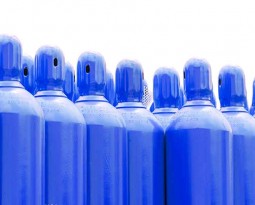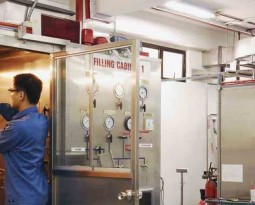
An organic compound is any liquid, gas, or solid whose molecules contain carbon. The most basic organic compounds are hydrocarbons. Hydrocarbons are molecules that are made up of atoms of carbon and hydrogen. Hydrocarbons can range from methane, the simplest hydrocarbon which contains one carbon atom and 4 hydrogen atoms, to very long chain hydrocarbons that can have up to 40 carbons in a chain. These hydrocarbon chains are known as alkanes. Alkanes with 1 to 4 carbons are gases. Chains of 5 to 10 carbons are volatile liquids, 11-18 carbon chains are the heavier oils used for fuels, and chains of 19-40 are waxes and tars.
There are other classes of hydrocarbons. Alkenes are hydrocarbons that contain a double bond between the carbon atoms. Alkynes have triple bonds between the carbon atoms. Aromatic hydrocarbons have a ring structure, these typically produce a smoky flame when burning.
As with most organic chemicals, hydrocarbons will burn. Burning or combustion, is a chemical reaction between a compound such as an alkane and oxygen. The result of this combustion reaction is heat. Other products of combustion of hydrocarbons are carbon dioxide and water. In the case of incomplete combustion due to lack of oxygen, carbon monoxide is also produced.
Organic compounds can also be more complex. These molecules contain additional elements such as nitrogen, oxygen, sulfur, fluorine, bromine, and chlorine. Due to the additional elements, there are other by products of their combustion. An example of this would be the burning of coal or oil. These materials contain sulfur and thus, upon combustion, sulfur dioxide is produced. Burning substances that contain chlorine, for example polyvinyl chloride or PVC, produces hydrogen chloride.
Due to the presence of flammable gases such as these, there is a risk of explosions or fires in many industrial facilities. There are mixtures of these organic compounds in the air that are volatile. For the petrochemical industry, the raw materials used to produce fuels are subject to natural decomposition and are altered in the production process which creates additional combustible compounds.
Due to the high risk of explosions in these facilities, an inerting procedure must be used. Inerting procedures reduce the risk of combustion of materials in a confined space. One example of a chemical used for this process is nitrogen. Nitrogen is pumped into a space because it is a non-reactive or inert gas. This is commonly used in storage tanks on oil tankers, nitrogen is pumped into the tanks and then before employees enter, air is pumped in to clear the space of nitrogen. Special instruments are used to monitor the inerting process and are also used to make operators aware of any dangerous mixtures of gases in the air.
When creating monitoring systems for the concentration of these gases, the LEL or lower explosive limit must be considered. The LEL is defined by two standards, ISO10156 and IEC60079-20:2000. IEC refers to the International Electrotechnical Commission. It is an international organization that sets the standards. In the past, levels of flammability were set by determining the fire potential and the ability to oxidize valves on cylinders. Recently, the IEC has defined LEL concentrations based on a “stirred” gas concentration rather than still. Some of the gases monitored are more volatile when stirred and due to this addition, some LELs levels for gases may vary based upon which standard is used. For example, one standard for 50% LEL of methane calculates a 2.2% concentration in air, as opposed to a 2.5% volume in the other standard. If the detectors are using different standards, there could be a 13.6% error in this instance.
These detection systems for flammable gases are designed to alarm before the gases reach a concentration that could cause an explosion. Most alarms are set to alert at 20% LEL, however, some industries such as the oil and gas industry set their alarms to 10% LEL. After this initial level, there are secondary and tertiary alarms for increasing levels. Typically a second alarm would be set to 40% LEL and a third at 100% LEL.





